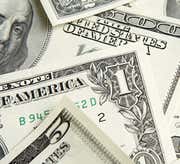The Consumer Credit Report is released monthly by the Federal Reserve Board. The report estimates changes in the dollar amounts of outstanding loans to individuals, funds which are mainly used to purchase consumer goods. Loans backed by real estate, such as home equity lines of credit (HELOCs), are excluded from the survey.
The two classes of credit covered are revolving and non-revolving credit; revolving credit can be increased by the consumer up to a specified limit without contacting the creditor, while non-revolving terms are fixed at the time the loan. Credit cards are an example of the former and an automobile loan is an example of the latter.
Both classes are segmented into the categories below. The Consumer Credit Report shows the outstanding balances for:
- Commercial banks
- Finance companies
- Credit unions
- Federal government & Sallie Mae
- Savings institutions
- Non-financial businesses
- Securitized asset pools
Average interest rates are shown for many types of consumer debt, such as auto loans, credit cards and bank loans, collectively showing investors the overall "credit quality" of consumers and where the highest rates of growth are occurring.
Data is collected through surveys of banks, finance companies, retail sales outfits and credit unions, among others. Each release will show the three previous months' results, including any revisions to recent periods, if they have occurred. (For related reading, see Consumer Credit Report: What's On It.)
Why the Consumer Credit Report is important
Consumer credit usage is quite sensitive to consumer confidence and other economic indicators. The release of this data allows investors to see how trends in the job market, trends in the value of homes and sentiment about the economy have impacted consumer spending.
The portion that tracks consumer interest rates provide an indication about lender’s attitudes about the creditworthiness of consumers over time.
Consumer credit is considered a good indicator of the potential future spending levels seen in the Personal Consumption and Retail Sales reports, and shows the extent to which benchmark interest rates such as the fed funds rate and prime rate have translated themselves at the consumer level (it can take six months to a year for macro interest rates to work their way down to consumers).
Consumer credit figures have a lot of seasonal and inherent volatility, so investors should always review the current report for adjustments to prior periods, paying particular attention to revisions to year-over-year growth. Long-term trends are the most studied portion of the report, both in the total outstanding balances as well as the change in overall interest rates being charged.
The Conference Board has tapped consumer credit as a lagging indicator, and uses a ratio of consumer credit to personal income as a component of its Index of Lagging Indicators. The Fed operates on the theory that consumers will not significantly increase their borrowing levels until their personal incomes increases enough to justify the higher debt load. As such, borrowing may show the largest increases when the economy is already coming out of a recession, rather than during the worst of it.
Strengths of the Consumer Credit Report:
- Contains detailed breakdown of auto loan figures, such as average maturity and prevailing interest rates.
- Data is provided with and without seasonal adjustments.
- Release shows comparisons against previous month, previous year, and also against results from the last five years.
Weaknesses of the Consumer Credit Report:
- Only total growth in outstanding loans is shown; there is no way of knowing if consumer payments have fallen off or if new loan growth has slowed based on a falling consumer credit number (and vice versa).
- Absence of home-equity debt provides for an incomplete picture.
- Because it comes out after the consumer confidence report and retail sales reports for the month, some analysts will not look as intently at the consumer credit figures month to month, instead reviewing multi-period trends once or twice a year
Economic Indicators: Consumer Price Index (CPI)
-
 Small Business
Small BusinessSmall Business Loan Vs Line of Credit: How They Differ
Understand the differences between a small business loan and a line of credit, and learn some of the most appropriate uses for each form of financing. -
 Personal Finance
Personal FinanceTime to Accept Credit Card Offers Again?
How much you could get and whether to respond -
 Investing
InvestingInvesting in Credit Card Companies
Find out why investing in credit card companies requires keeping an eye on consumer indexes and the overall health of the economy. -
 Small Business
Small BusinessHow To Increase Your Appeal To Prospective Lenders
Making a business eligible for loans/credit cards at the best possible rates requires crafting an excellent credit profile through the smart use of credit. -
 Investing
InvestingRevolving Credit vs. Line of Credit
Revolving credit and a line of credit are arrangements made between a lending institution and a business or individual. -
 Personal Finance
Personal FinanceThe Importance of Your Credit Rating
A great starting point for learning what a credit score is, how it is calculated and why it is so important. -
 Personal Finance
Personal FinanceCredit And Debt Management
America is addicted to debt. Learn how to manage your credit and keep debt from ruining your life. -
 Personal Finance
Personal FinanceConsumer Credit Card Balances Are Down $19 Billion
Rising balances and credit limits may be fine for now, but with household debt rising faster than GDP, there could be consequences in the next few years. -
 Investing
Investing5 Ways Bad Credit Screws Up Your Life
When your credit score slumps, many other things in your life can also start to slide downward. How to recognize the situation and start dealing with it. -
 Personal Finance
Personal FinanceHow To Overcome Bad Credit
Some lenders can look overlook your credit score and assess other factors that fairly determine if you are a reasonable credit risk.



